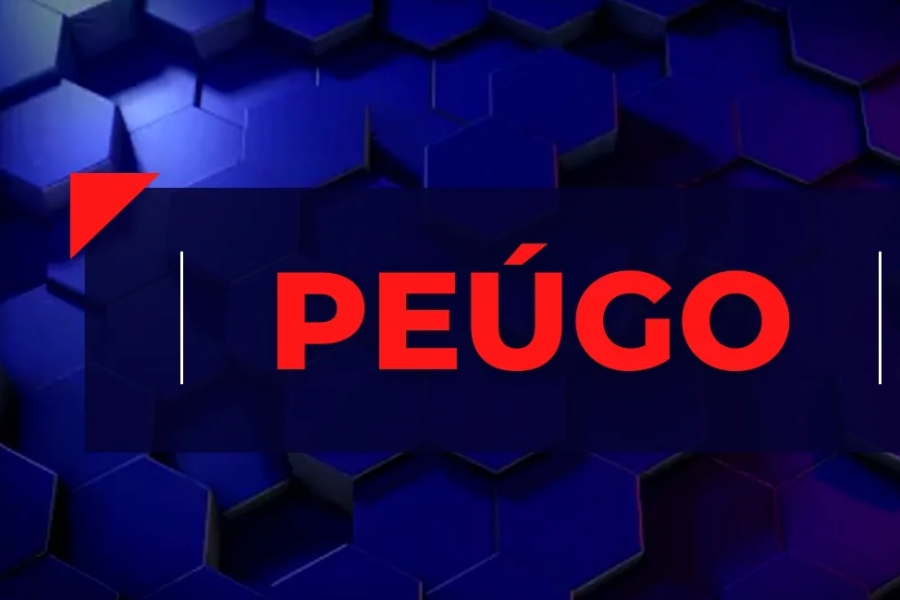Peúgo, a captivating and mysterious relic of ancient civilizations, has fascinated historians, archaeologists, and enthusiasts for centuries. This article provides a deep dive into the origins, cultural significance, and ongoing relevance of peúgo, offering readers a detailed and authoritative exploration that highlights its fascinating story.
What is Peúgo?
Peúgo is a term that refers to a remarkable and significant artifact or concept that holds deep roots in the spiritual and cultural practices of ancient civilizations. The precise definition of peúgo can vary depending on the culture or region, but it is commonly associated with objects that possess profound symbolic, spiritual, and cultural importance. Below, we explore the many facets of peúgo and its role in ancient traditions.

A Symbol of Spiritual and Cultural Significance
It represents a deep connection between the material world and the divine, often acting as a bridge between the earthly and spiritual realms. They were imbued with meaning and were vital to the rituals and ceremonies of the cultures that created them.
The Role of Peúgo in Ancient Rituals
Peúgo artifacts were essential elements in various rituals and ceremonies, serving as tools to communicate with the spiritual realm. The symbolic nature of these artifacts reinforced the connection between the sacred and the everyday life of the people.
Objects of Power and Status
Beyond their spiritual significance, peúgo artifacts were also symbols of power, authority, and social status. Rulers, warriors, and high-ranking members of society often possessed peúgo items to signify their divine right to lead and protect their people. The display or use of such objects communicated their elevated position in society, both in terms of spiritual authority and worldly power.
Variations Across Cultures
While the concept of peúgo shares similarities across different cultures, its exact form and interpretation can vary widely.
An Enduring Legacy
The importance of peúgo artifacts endures to this day. Modern research continues to reveal new insights into the materials, craftsmanship, and cultural significance of these objects. Today, peúgo is not only a subject of historical interest but also an ongoing symbol of the ingenuity and creativity of ancient civilizations, leaving a lasting imprint on both the cultural heritage of past societies and the artistic expressions of the present.
Preserving Cultural Heritage through Peúgo
The conservation of peúgo artifacts is of paramount importance, as these objects are key to understanding the spiritual, artistic, and cultural legacies of ancient civilizations. By safeguarding peúgo, we not only preserve physical objects but also protect the stories, beliefs, and practices that these artifacts represent. The effort to preserve these items is essential for maintaining a tangible connection to our shared human history. Below, we explore the various aspects of preserving the legacy of peúgo.

The Role of Museums and Cultural Institutions
Museums and cultural institutions play a critical role in the preservation and study of peúgo artifacts. These institutions house some of the most significant collections of peúgo objects, offering a place for research, education, and public engagement. By displaying these artifacts, museums allow future generations to appreciate their beauty and cultural significance.
Proper Conservation Techniques
The preservation of peúgo artifacts requires specialized conservation techniques. Proper climate control, including temperature and humidity regulation, is essential to prevent deterioration. Additionally, conservationists use precise handling and storage methods to minimize damage during transportation or display. For artifacts made of delicate materials such as metal, wood, or organic substances, restoration and preservation efforts are particularly important to maintain their integrity over time.
Collaborative Efforts in Preservation
The preservation of peúgo is a global effort that involves collaboration between archaeologists, conservators, curators, and indigenous communities. Researchers from around the world often collaborate to study peúgo artifacts, sharing their expertise to develop innovative methods for their conservation.
Ongoing Research and Technological Advancements
Advances in research and technology have greatly enhanced our ability to preserve and understand peúgo artifacts. Non-invasive imaging techniques, such as 3D scanning and X-ray analysis, allow researchers to study the internal structure of these objects without damaging them. Additionally, new materials and methods in conservation have enabled the restoration of even the most fragile peúgo items. These technological advancements provide valuable insights into the ancient cultures that produced the artifacts, furthering our knowledge of their craftsmanship and significance.
Preserving the Cultural Context
Beyond the physical preservation of the artifacts themselves, it is also important to preserve the cultural context in which peúgo objects were used. This includes documenting oral histories, recording traditional practices, and conducting field research to understand the full significance of the artifact within its cultural and spiritual framework. Preserving the intangible aspects of peúgo ensures that future generations can not only admire these objects but also understand their deeper meaning and role in society.
The Cultural Significance of Peúgo
In ancient societies, peúgo artifacts were often believed to hold mystical properties, connecting the physical world to the divine. The detailed designs frequently depicted deities, celestial figures, and mythological beings, symbolizing the profound relationship between humanity and the cosmos.
Peúgo in Ancient Rituals and Ceremonies
Peúgo objects played a central role in sacred rituals and ceremonies conducted by priests, shamans, and spiritual leaders.Their use in these practices highlights their profound spiritual and cultural value.
Peúgo as a Symbol of Authority
In addition to its spiritual significance, peúgo also served as a powerful symbol of authority. Rulers and elite members of society would often wear or display peúgo artifacts to signify their high status and divine right to govern.
The Modern Relevance of Peúgo
Today, peúgo continues to intrigue modern scholars, archaeologists, and cultural enthusiasts. Advances in research have uncovered fascinating details about the techniques used to craft these artifacts, offering valuable insights into the technological abilities of ancient civilizations. These findings contribute to our understanding of history and culture, making peúgo a topic of continued exploration.
Peúgo’s Influence on Contemporary Art and Culture
The legacy of peúgo extends into modern art, where its intricate designs and symbolism inspire contemporary creators. Many artists incorporate elements from peúgo artifacts into their work, bridging the gap between ancient traditions and modern cultural expressions. This blending of old and new creates a rich and dynamic visual language.
Preserving Cultural Heritage through Peúgo
The conservation of peúgo artifacts is of paramount importance, as these objects are key to understanding the spiritual, artistic, and cultural legacies of ancient civilizations. By safeguarding peúgo, we not only preserve physical objects but also protect the stories, beliefs, and practices that these artifacts represent. The effort to preserve these items is essential for maintaining a tangible connection to our shared human history. Below, we explore the various aspects of preserving the legacy of peúgo.
The Role of Museums and Cultural Institutions
Museums and cultural institutions play a critical role in the preservation and study of peúgo artifacts. These institutions house some of the most significant collections of peúgo objects, offering a place for research, education, and public engagement. By displaying these artifacts, museums allow future generations to appreciate their beauty and cultural significance.
Proper Conservation Techniques
The preservation of peúgo artifacts requires specialized conservation techniques. Proper climate control, including temperature and humidity regulation, is essential to prevent deterioration. Additionally, conservationists use precise handling and storage methods to minimize damage during transportation or display. For artifacts made of delicate materials such as metal, wood, or organic substances, restoration and preservation efforts are particularly important to maintain their integrity over time.
Collaborative Efforts in Preservation
The preservation of peúgo is a global effort that involves collaboration between archaeologists, conservators, curators, and indigenous communities. Researchers from around the world often collaborate to study peúgo artifacts, sharing their expertise to develop innovative methods for their conservation.
Ongoing Research and Technological Advancements
Advances in research and technology have greatly enhanced our ability to preserve and understand peúgo artifacts. Non-invasive imaging techniques, such as 3D scanning and X-ray analysis, allow researchers to study the internal structure of these objects without damaging them. Additionally, new materials and methods in conservation have enabled the restoration of even the most fragile peúgo items. These technological advancements provide valuable insights into the ancient cultures that produced the artifacts, furthering our knowledge of their craftsmanship and significance.
Preserving the Cultural Context
Beyond the physical preservation of the artifacts themselves, it is also important to preserve the cultural context in which peúgo objects were used. This includes documenting oral histories, recording traditional practices, and conducting field research to understand the full significance of the artifact within its cultural and spiritual framework. Preserving the intangible aspects of peúgo ensures that future generations can not only admire these objects but also understand their deeper meaning and role in society.
The Legacy of Peúgo for Future Generations
Preserving peúgo artifacts allows us to pass on a tangible connection to the past, fostering a greater understanding of human history and culture. These artifacts serve as a bridge between ancient civilizations and the modern world, providing valuable lessons in art, spirituality, and human ingenuity. By maintaining these objects, we ensure that the cultural legacies they represent will continue to inspire and educate future generations.
Expert Perspectives on Peúgo
To provide a comprehensive and reliable perspective, we spoke with experts in archaeology, anthropology, and art history. Their insights offer a deeper understanding of the role peúgo played in ancient societies and its continued influence today.
Frequently Asked Questions (FAQs) about Peúgo
Q1: What is Peúgo?
Peúgo refers to an ancient artifact or concept deeply embedded in spiritual and cultural traditions. It is typically associated with objects of great significance, often used in rituals and ceremonies as symbols of power, status, or divine favor.
Q2: What materials were used to create Peúgo artifacts?
Peúgo artifacts were crafted from a variety of materials, including metals (gold, bronze), stones (jade, obsidian), ceramics, and organic substances (wood, bone). The choice of material often reflected the intended purpose of the artifact.
Q3: How were Peúgo artifacts used in ancient cultures?
Peúgo artifacts played key roles in rituals and ceremonies, often used by priests and spiritual leaders to communicate with the divine. They were also symbols of power, worn by rulers or high-status individuals to signify their authority.
Q4: What is the significance of Peúgo in ancient cultures?
Peúgo artifacts were believed to possess mystical powers, channeling divine energy to provide protection, prosperity, and spiritual guidance. They also symbolized the connection between the earthly realm and the divine.
Q5: How is Peúgo preserved today?
Peúgo artifacts are carefully preserved in museums and cultural institutions through climate control, specialized handling, and restoration efforts. Ongoing research continues to uncover insights into their materials, craftsmanship, and cultural context.
Conclusion
Peúgo stands as a testament to the creativity, spirituality, and craftsmanship of ancient civilizations. Its continued influence on modern culture highlights its timeless appeal. By preserving and studying peúgo, we not only gain insights into the past but also connect to the rich cultural heritage that continues to inspire and shape our future.
Stay Connected: Article Forward
